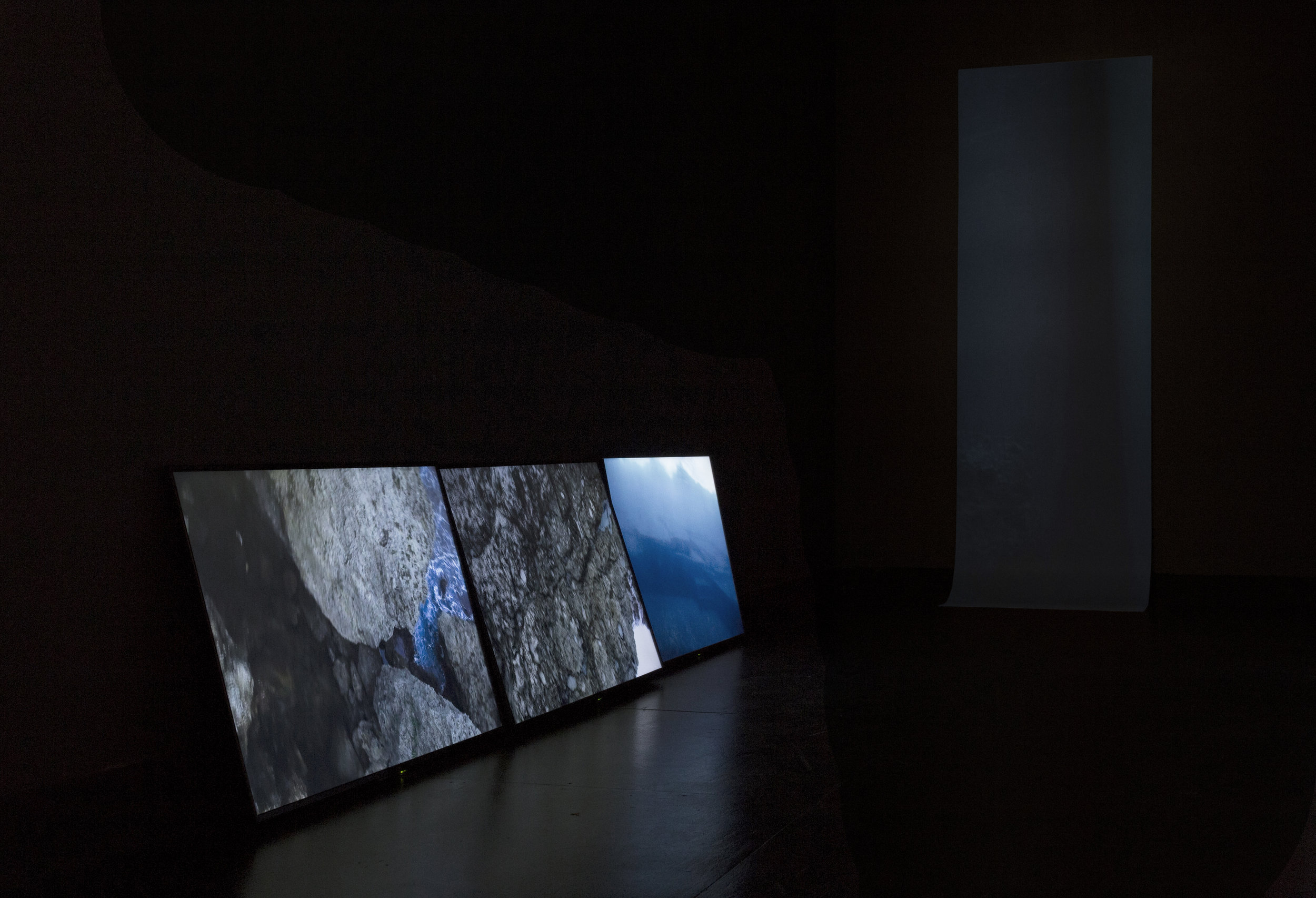
Geography of Space, Archaeology of Time
The waves churn as they are forced against the rocks, frothy white spray shoots forth with great velocity as the elasticity and softness of water comes up against the immovable, hard rock cliffs. The camera circles as the ocean swirls, the movement enveloping my body as a dizzy nausea floats over me—this is Izabela Pluta’s work Cavitation (2018) and it induces a powerful bodily reaction through the extreme movement of the camera.
This three-channel video work was shot by Pluta on a rock formation situated off the coast of Yonaguni, Japan’s westernmost inhabited island; Yonaguni is the site where the Pacific Ocean meets the East China Sea. It is an intersection of tidal flows and water patterns, but also a geographical construct imposed upon this section of landscape that is enmeshed with myth around its formation. Two of the screens show the ocean churning, and the rock formations as waves crash against them. The third is contrastingly calmer; shot from underneath the water, it’s freed from the chaos of the other two screens. Cavitation features two separate iterations or scenes, discernible through their distinct audio tracks. In the first, a diver’s strong and audible breathing through a breathing apparatus seems to place the viewer into the first-person action of the video, accompanied by the voices of a number of men talking at a dive briefing in Yonaguni. The second iteration of audio is Pluta herself reading an adaptation of W.G. Moore’s The Penguin dictionary of geography. These two versions inform our understanding of these ocean and rock formations as they are placed alongside the construct of time through these two distinct moments inhabited by different people. Are these possible worlds happening simultaneously along the lines of alternate worlds theory or the multiverse, where different universes exist simultaneously, or is Pluta referring to the many ways to conceptualise the vastness of time and space that exist outside of the Western linear perspective of time?
Pluta’s cross-disciplinary practice entwines audio elements with photographs and moving image; she is concerned with how space and time interact, and considers how these phenomena are projected onto and impact upon the earth and the landscape. Cavitationplunges us into a disorientating folded time where we are unsure about what came before or after: past, present, future and place are called into question, as are preconceived notions about the ordering of these things. Positioned towards the back of the exhibition, this frenetic work occupies the second room, sitting alongside the calmer and quieter works that make up the rest of the Geography of Space, Archaeology of Time.

Cavitation 2018
three-channel video with audio.
duration 9:06 min
installation view
The process by which the depth of the sea is defined 2018
dye-sublimation print on acoustic fabric
installation view
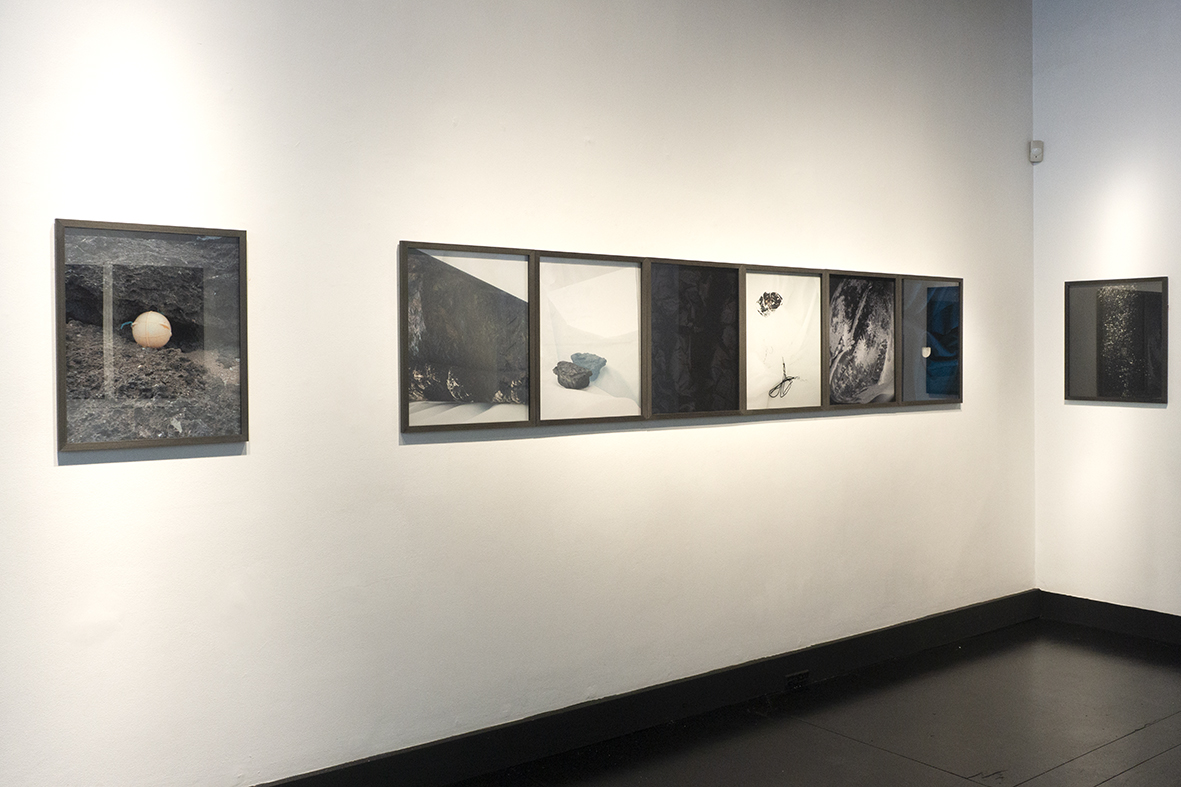
Abstruse terms and general uncertainties 2018
chromogenic prints on metallic paper
installation view
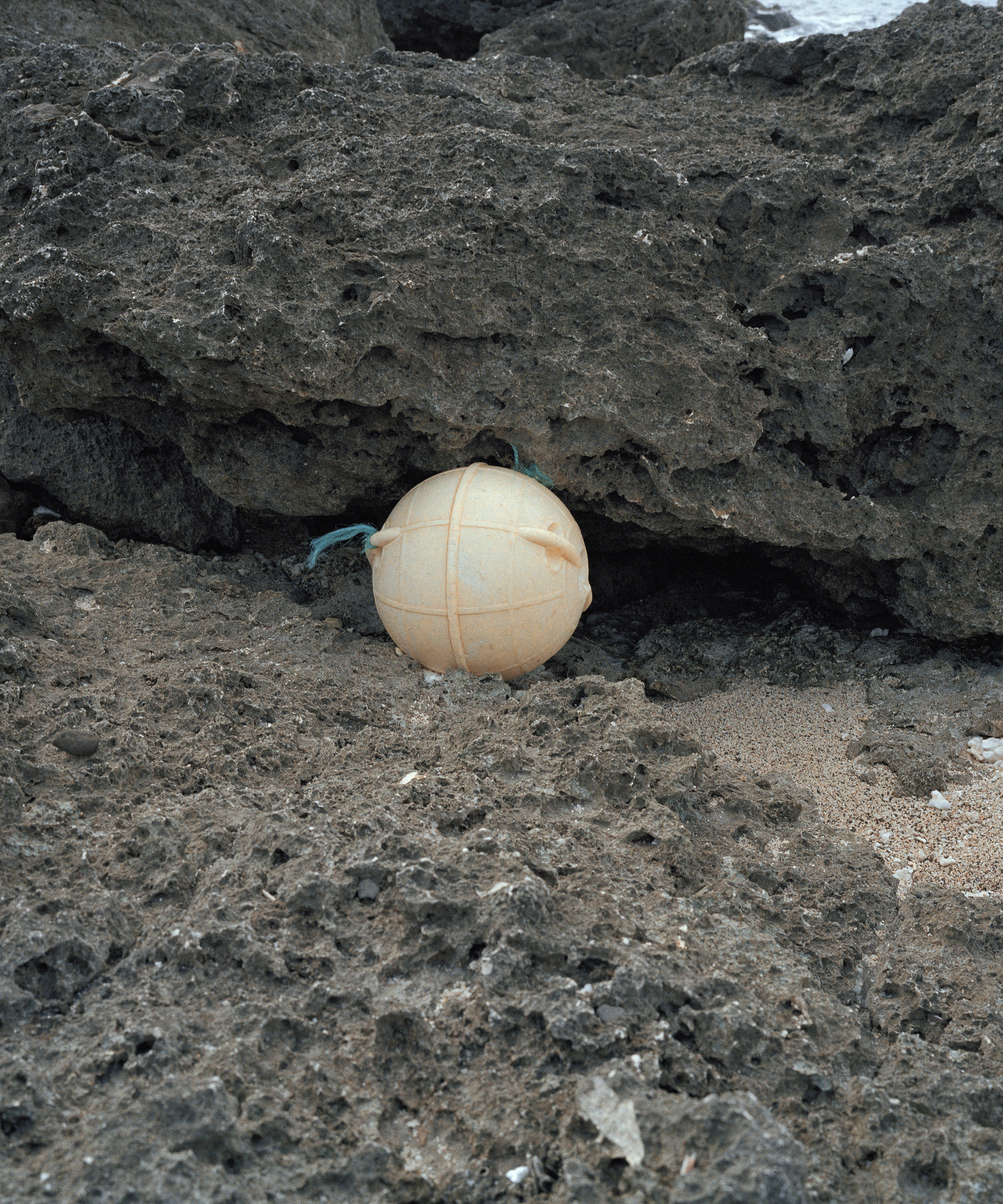
Ocean current 2 2018
chromogenic print on metallic paper
detail

Fold 2018
chromogenic print on metallic paper
detail

Mirage 2018
chromogenic print on metallic paper
detail
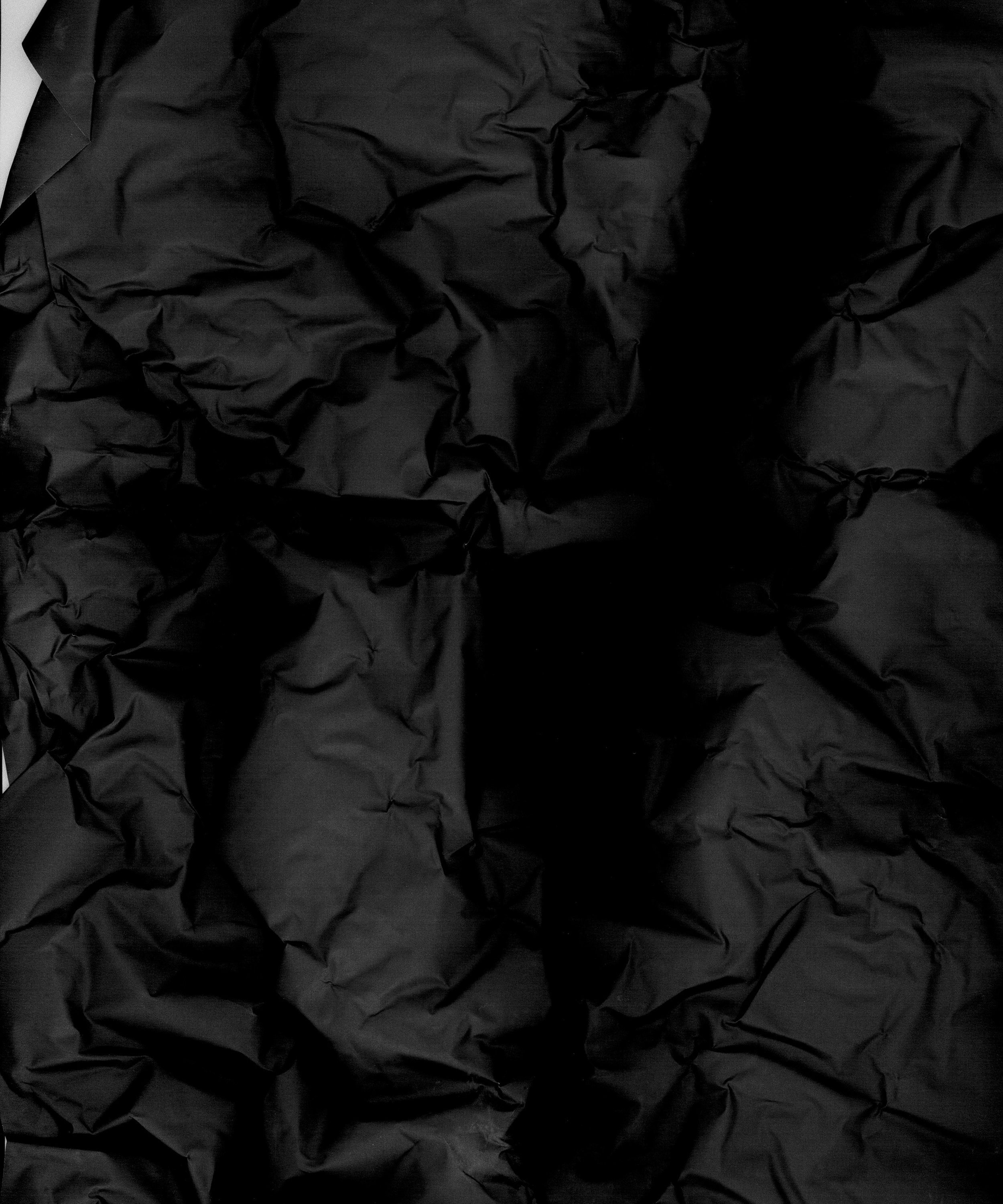
Sounding 2018
chromogenic print on metallic paper
detail

Fault 2018
chromogenic print on metallic paper
detail
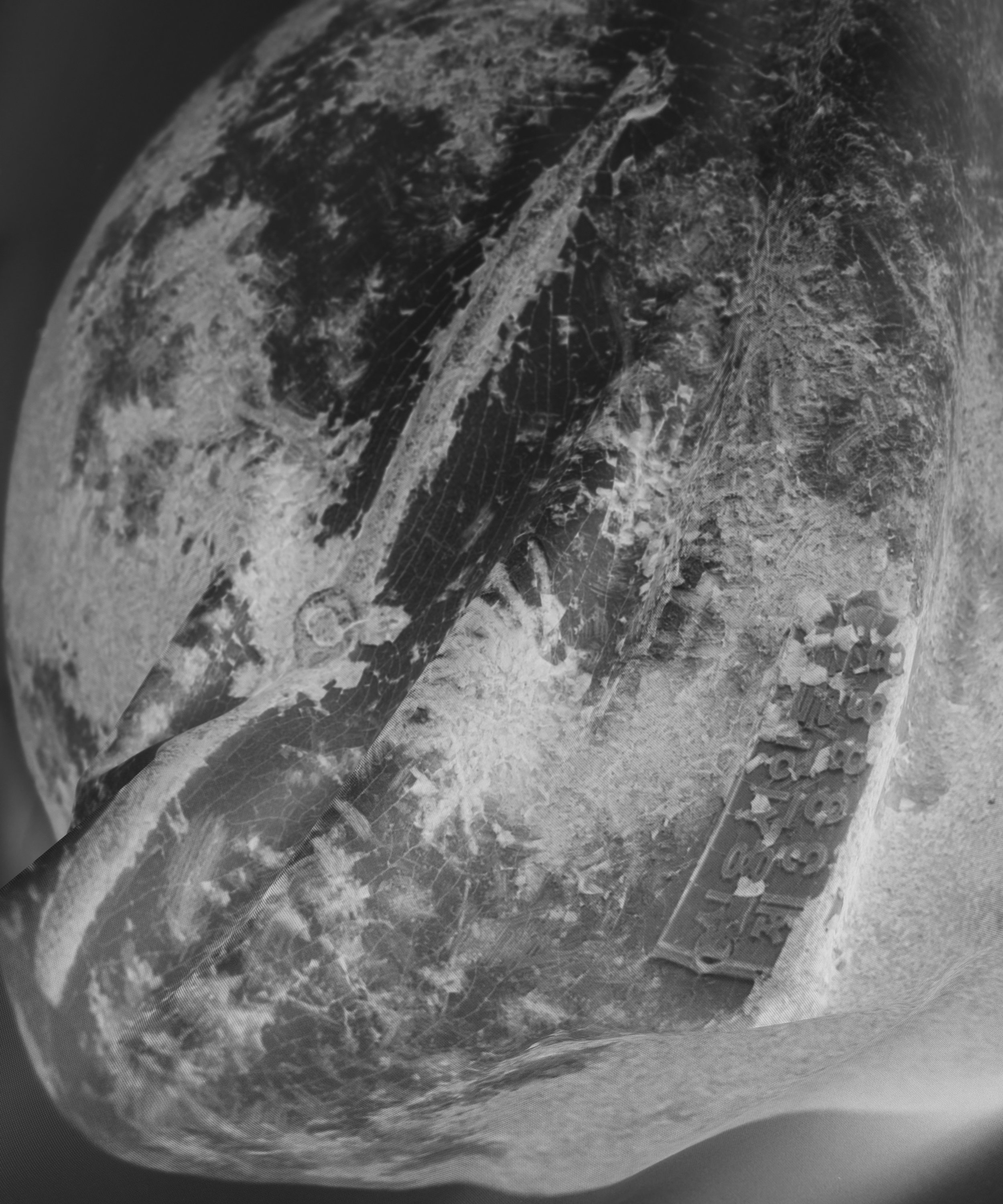
Weathering 2018
chromogenic print on metallic paper
detail

Talus 2018
chromogenic print on metallic paper
detail

Deep 2018
silver gelatin print
detail

Ocean current 1 2018
chromogenic print on metallic paper
detail
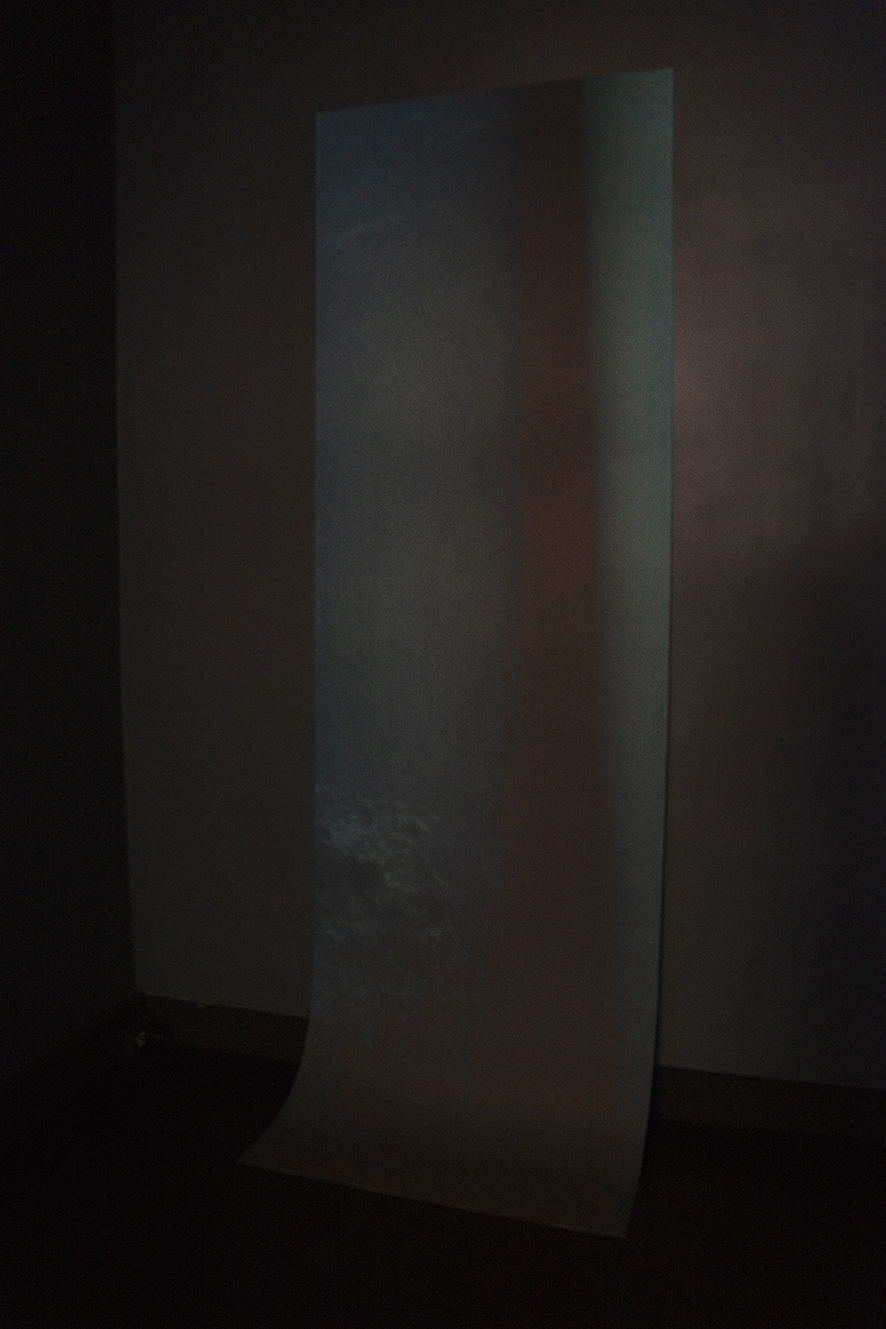
The process by which the depth of the sea is defined 2018
dye-sublimation print on acoustic fabric
installation view
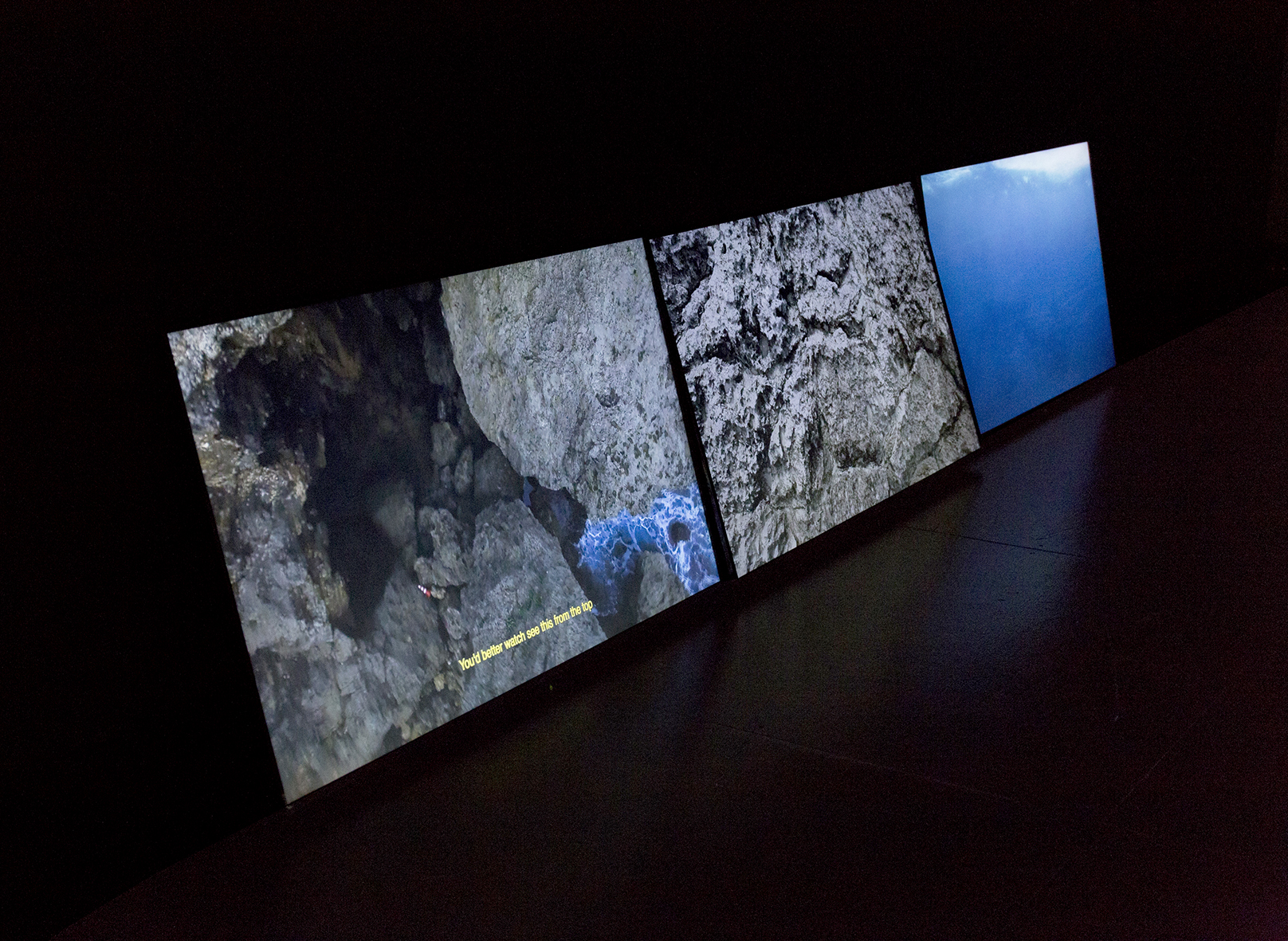
Cavitation 2018
three-channel video with audio
duration 9:06 min
editing: Vera Hong
voice: Izabela Pluta (adapted from W.G. Moore, The Penguin dictionary of geography, Fourth edition (with revision) 1973, Penguin Books, Great Britain); and diving briefing, SOU-WES Yonaguni, Japan (22 January, 2018)
project assistance: Paulo Macchia, Andrew Yip, Janusz Pluta, 3331 Arts Chiyoda, Tokyo, and Sou-Wes Diving Company, Yonaguni, Japan

Cavitation 2018
three-channel video with audio
duration 9:06 min
video still
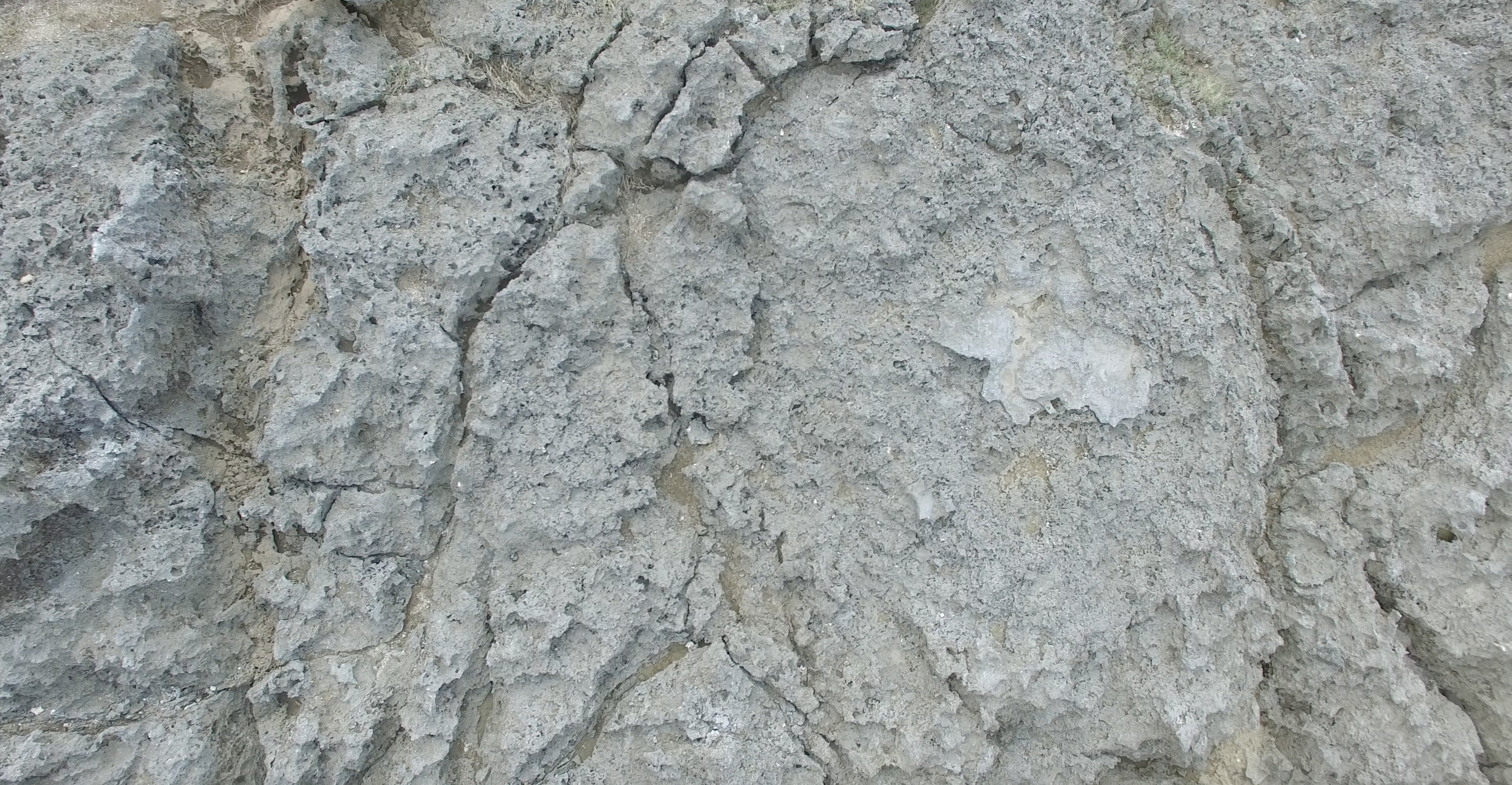
Cavitation 2018
three-channel video with audio
duration 9:06 min
video still
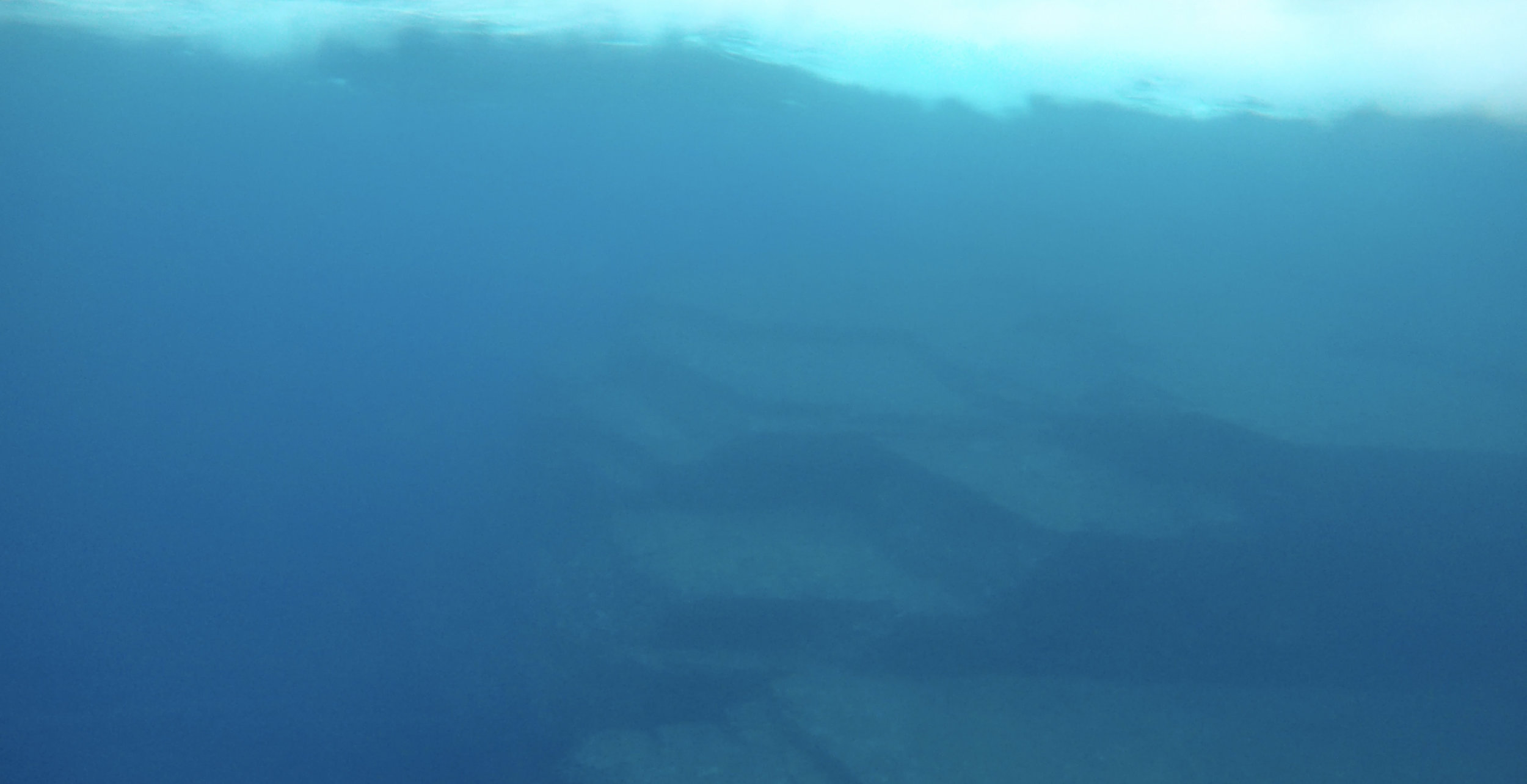
Cavitation 2018
three-channel video with audio
duration 9:06 min
video still

Cavitation 2018
three-channel video with audioduration 9:06 min
editing: Vera Hong
voice: Izabela Pluta (adapted from W.G. Moore, The Penguin dictionary of geography, Fourth edition (with revision) 1973, Penguin Books, Great Britain); and diving briefing, SOU-WES Yonaguni, Japan (22 January, 2018)
project assistance: Paulo Macchia, Andrew Yip, Janusz Pluta, 3331 Arts Chiyoda, Tokyo, and Sou-Wes Diving Company, Yonaguni, Japan
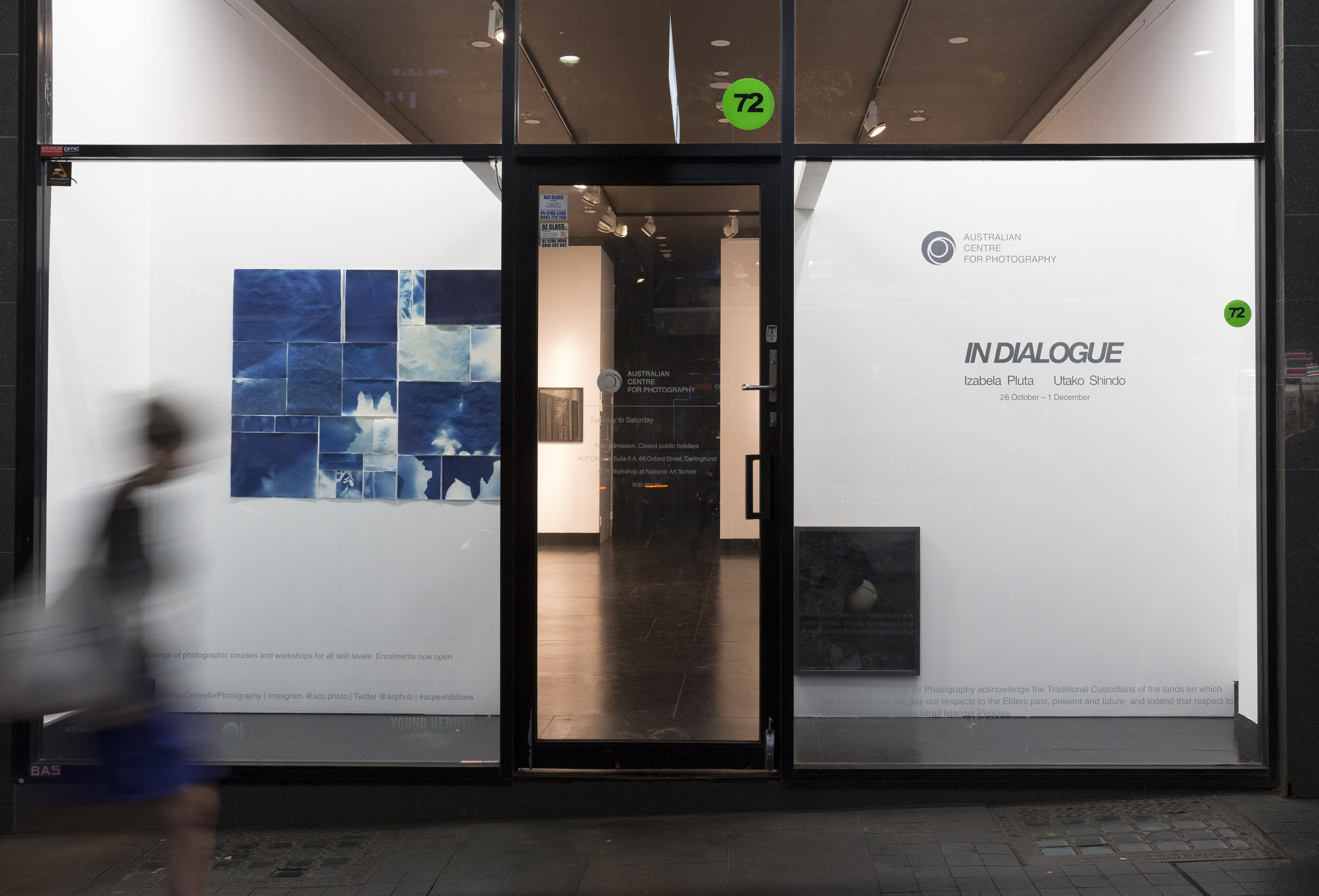
Geography of space, archaeology of time with Izabela Pluta and Utako Shindo 2018
The Australian Centre for Photography, Sydney
street view

















